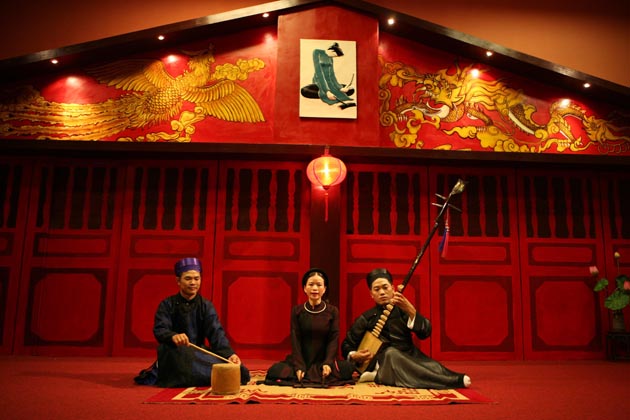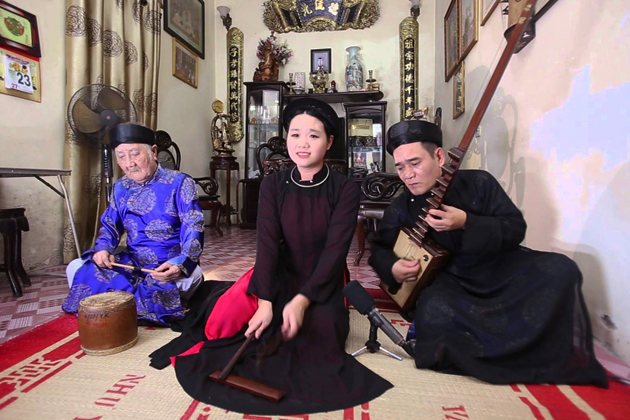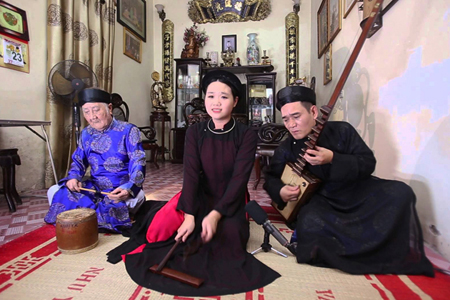According to each place and each period of time, Ca Tru has many different names which can also be called A Dao singing, Cua Dinh singing, Cua Quyen singing, Co Dau singing, Nha To singing, Nha Tro singing, or Ca Cong singing. Having a special value in Vietnamese traditional music, Ca Tru is a unique and age-old cultural feature having a strong attachment to festivals, customs, religions, music, literature, thoughts, and philosophy of Vietnamese.
Ca Tru had its beginning in the 15th century which still maintained the uniqueness and diversity through ups and downs of Vietnam’s history. Ca Tru was created and transmitted to the following generations by Giao phuong who has a profound knowledge about it.
Ca Tru was performed in a private space with Vietnamese musical instruments and a unique style of poetry. Ca Tru has 56 different musical melodies or forms called the cach which must be sung in sophisticated way. Besides, the singers play a very important role in the success of the performances who are required to be very imprecise and meticulous.

To have a completed Ca Tru performance, there are at least 3 artists included. The first one is a female singer called “dao” or “ca nuong” who sings and play the “phach” (made of bamboo or wood) at the same time. The second one is a male instrumentalist called “kep” who plays the “dan day” having 3 strings and 10 frests. The last one is “quan vien” – a person beating the “trong chau” or “praise drum”. He is usually a musician from the group of Ca Tru singer and instrumentalist but sometimes he can be the composer of the lyrics.
The performing space is quite narrow. In common, the “dao” sits in the middle, the “kep” and “quan vien” sit next to her in 2 sides. Audiences will sit in the front of the performing mat.

Being an art form of sung poetry, Ca Tru has various kind of songs for many different purposes such as Hat tho for worship singing, Hat thi for competitive singing and Hat choi for entertainment. Ca Tru songs’ lyrics have deep meaning and few words based on emotional and thoughtful poetry.
In the middle of 2009, it is recorded that there were 63 clubs including about 769 artists with 513 “dao” and 256 “kep” and “trong chau” players in 14 provinces and cities throughout the country. However, nowadays, there are very few artists who can sing from 10 tunes or more.
After 4 years of summing to UNESCO for the consideration, Ca Tru singing was recognized as an intangible cultural heritage in 2009.

